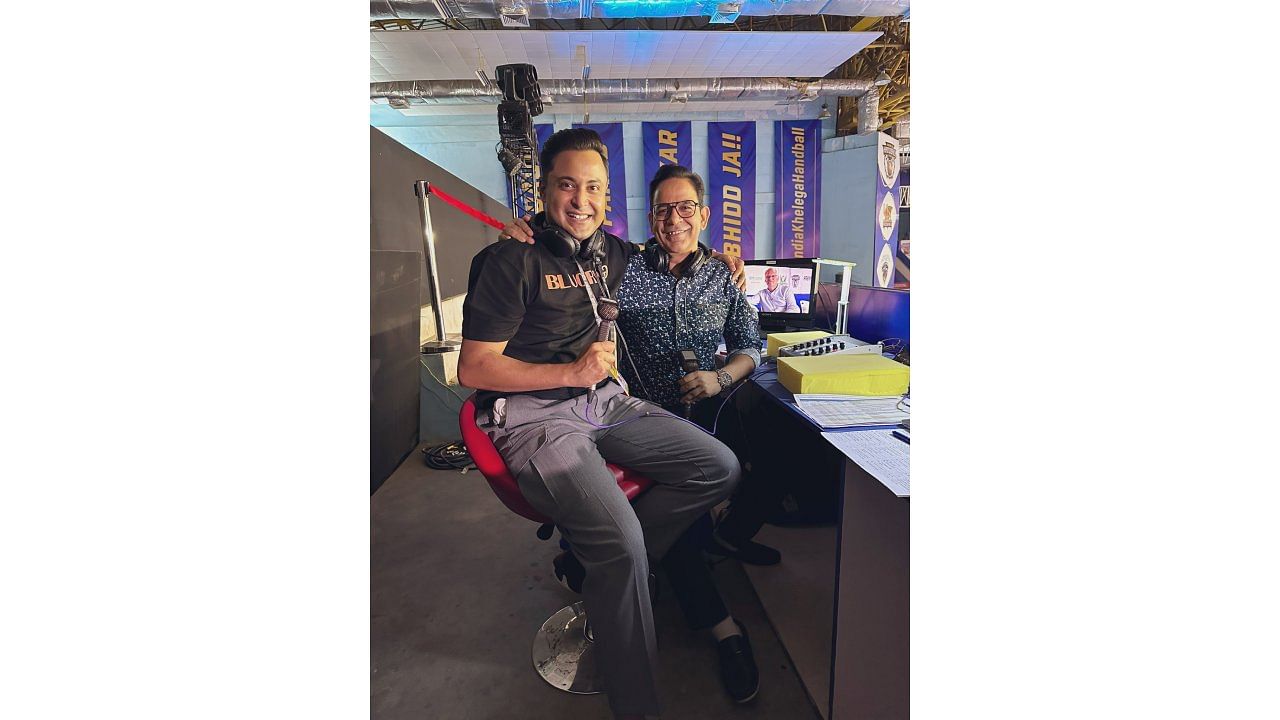
The year was 2014. The Indian cricket team was touring England. Anant Tyagi was starting to make some waves as a Hindi commentator and could not resist heading to Lord's to watch the Test and, if possible, have a moment with his hero.
“I waited for 3.5-4 hours after the game and got a picture... with Harsha Bhogle,” Tyagi says with a laugh. “A few years later, we were on the same flight and I showed him the picture. He said ‘look how far you’ve come!’.”
Tyagi has.
Since cutting his teeth as the England-based Hindi commentator for the Premier League a decade ago, Tyagi has worn many hats. He was the voice of the Indian Super League and Indian football, the host of the India Premier League and FIFA World Cup, and now a well-known face in the Indian sports broadcast. And to think, it had almost not come to pass.
Cricket | IPL’s broadcast wars
“I had done my Master’s in Mass Com, the natural progression was to find a job in media but the salaries were not the greatest at that time,” he recounts his story. “Sports journalism avenues were limited. There were established names in print but television was only making small steps. I went to a University in England to do sports journalism. I encountered some racism, I was told that my accent, looks, and how I dressed may not be suited for a career in front of a camera. So I switched to an MBA programme at the same university before enrolling in the London School of Economics for a course in E-Business.”
He was already working as a business analyst when the door creaked open to get into sports broadcasting and Anant, resourceful as ever, kicked it wide open.
Around the same time in India, Khuri Irani was taking her first steps too.
“I was always a TV presenter at Zoom, CNBC, TV18, etc but not sports,” she says of her start. “My reputation at Star preceded me because I would go for late-night screenings, I am a huge Man United fan and I’d have banter. So they decided to bring me to Star Sports for 10 minutes for an interview. It lasted more than 2 hours. A week later, I was hosting the Premier League.”
Like Tyagi, Khuri too has become a familiar face in Indian football, hosting shows and interviews for Star Sports. A fact she is proud of, having succeeded in an industry that remains a male bastion.
“Football was one area where a woman getting exposure was still untapped,” she says. “I have done eight seasons of the ISL and other international tournaments. Even now, I am proving myself.”
This is not to say that the entire industry is sexist. But with a society that harbours certain misogynistic views, it is bound to filter through.”
All this is in addition to the trigger-happy crowd on social media who give their remarks at the slightest, an almost imperceivable, blemish in opinion, clothing, or bias.
While both Tyagi and Khuri have carved a name for themselves in this space at a time when the role taken up was niche, the opportunities have grown massively. With sports now a round-the-year entertainment product, the landscape had to evolve to keep up.
“We have the digital medium now. It allows people to have YouTube channels. Sooner or later, if you dedicate the time, you become like a semi-expert,” says Anant, now working for Viacom18. “There are channels I focus on to reduce the time I spend researching. YouTube gives that financial side as well, you can get into collaboration with brands when your channel grows. Even in terms of TV and digital, the payments for anchors are a lot better.”
For the next generation, open platforms have given more tangible proof that with discipline, informed opinions and passion, there is a path to be followed.
“The future is digital. The discipline remains the same but the style has to change slightly to grip the audience faster. This comes from the view that 50 percent of the population is below 35 years. This demographic is very different from what Harsha was catering to when he started. You have to constantly reinvent,” says Tyagi.
“Esports is growing massively. It is catering to an audience that is happier sitting at home than going to the stadium. The other channel that has become massive is fantasy. People have become interested in analytically understanding rather than just thinking this is a game of luck.”
Even watchalongs have become a rage.
Regardless of the platform, avenue, or niche interest, the sports broadcast is expanding into territories unexplored. It means evolution is unavoidable and opportunities unlimited.